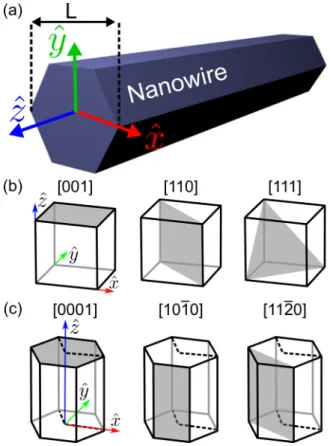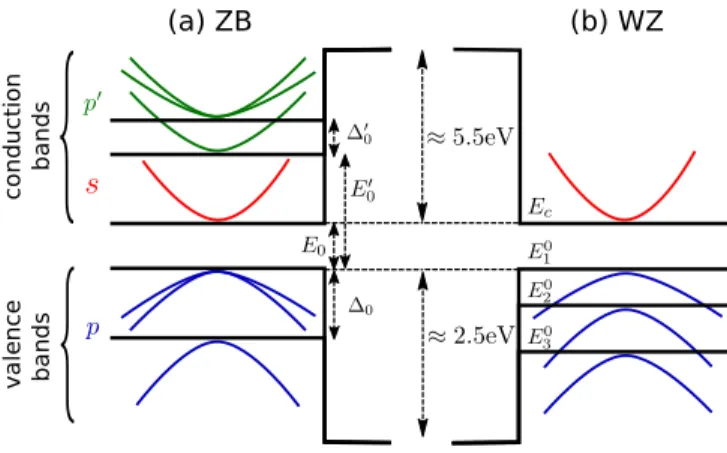Institute for Theoretical Physics, University of Regensburg, 93040 Regensburg, Germany
3
Institute of Physics, P. J. Šafárik University in Košice, Park Angelinum 9, 04001 Košice, Slovakia
4
Volltext
3
4
Abbildung


![FIG. 6. Symmetry analysis of [001]-oriented ZB nanowire. (a) Atomic arrangement along [001] orientation of a ZB structure with indicated x and y axes](https://thumb-eu.123doks.com/thumbv2/1library_info/3936018.1532255/5.911.470.836.795.957/symmetry-analysis-oriented-nanowire-arrangement-orientation-structure-indicated.webp)
![Figure 7 shows the calculated electronic subband structure for a ZB InSb hexagonal nanowire along [001], calculated using the 14-band k · p method](https://thumb-eu.123doks.com/thumbv2/1library_info/3936018.1532255/6.911.97.425.106.450/figure-calculated-electronic-subband-structure-hexagonal-nanowire-calculated.webp)
ÄHNLICHE DOKUMENTE
If the surface conductive channel is a consequence of Fermi level pinning, the internal Rashba and Dresselhaus SOC can be comparably large and compete with each other.. Yet, here
IV, we describe our main results: (i) the fitting approach, (ii) the comparison between the ab initio and k · p for band structure and the spin splittings, (iii) the spin
II we present DFT results of the electronic band structure calculation and specifically the spin-orbit coupling induced spin splitting of the bands for a semifluorinated graphene
We introduced realistic spin-orbit coupling model Hamiltonians and provided quantitative values for their parameters that can be used to study spin relaxation, spin transport,
The effective anisotropic exchange model is useful in precise analysis of the physical realizations of quantum computing schemes based on quantum dot spin qubits, as well as in
(a) Electric field induced splittings at the K point as functions of the electric field: (blue circles) and (green squares) shows the splittings of the high-energy conduction
Our new SO term gives rise to a nonzero ballistic spin-Hall conductivity, which changes sign as a function of the Fermi energy (" F ) and can induce an unusual Zitterbewegung
This effect amounts in spin accumulation as a response to an applied in-plane electric field and is therefore a possible key ingredient towards all-electrical spin control